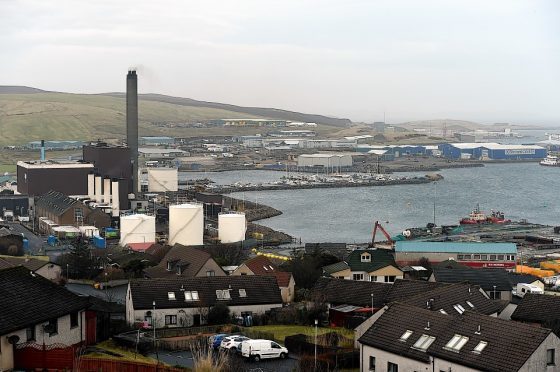The oil and gas slump has taken a toll on Shetland’s main commercial port in the first half of 2016 although a record cruising season means Lerwick Harbour’s ship has still come in.
The latest traffic statistics for Lerwick Harbour show mixed fortunes across the sectors using Shetland’s main commercial port in the first half of 2016, including a significant increase in cruise traffic and higher fish landings, but a predicted fall in offshore-related activity which was also reflected in less cargo handled.
Sandra Laurenson, Lerwick Port Authority chief executive, said: “The performance was in line with our projections, given the market conditions for the various, often international, industries served by the port.
“The cruise industry is proving to be the highlight of the year, with the promise of a record-breaking season and more to come in 2017.
“However, the oil and gas industry statistics are a stark reminder that it is not just north-east Scotland which is hit by the severe downturn in operations which has also impacted on Shetland and elsewhere.
“Currently, our expectation is that, with the close-out of some subsea projects this year, 2017 will possibly be even quieter for us for oil & gas traffic.”
Vessel arrivals were down 2% to 2,326 in the six months to June, compared with the same period last year, including a 28% drop in oil-related arrivals and a 16% decline in their tonnage at 1.15 million gross tonnes. However, the volume and size of cruise vessels meant the overall tonnage of shipping was virtually unchanged – up 0.2% at 5.5 million gross tonnes.
While pilotage movements were down 18%, large cruise ships meant the tonnage of vessels piloted rose 2% to 4 million gross tonnes.
Cruise passenger numbers were up 60% at 19,674 in the first three months of the season which is expected to see a record 79 cruise ships by its close in October. There are already 65 booked for 2017. Usage of the Lerwick to Kirkwall and Aberdeen ferries between January and June remained steady at 61,157, with the combined cruise/ferry passenger total rising 10% at 80,831.
Cargo over the port’s quays reduced by 9% to 455,896 tonnes, including a 16% fall in oil-related shipments, at 63,143 tonnes.
The pelagic sector contributed to higher overall fish landings – 21,966 tonnes, valued at £19.3 million – up 7.5% on volume and 9.5% on value. The figure included 4,400 tonnes of white fish, valued at £7.0 million – down 7% on volume and 1.4% on value, with the price per tonne up 6% to £1,597.
